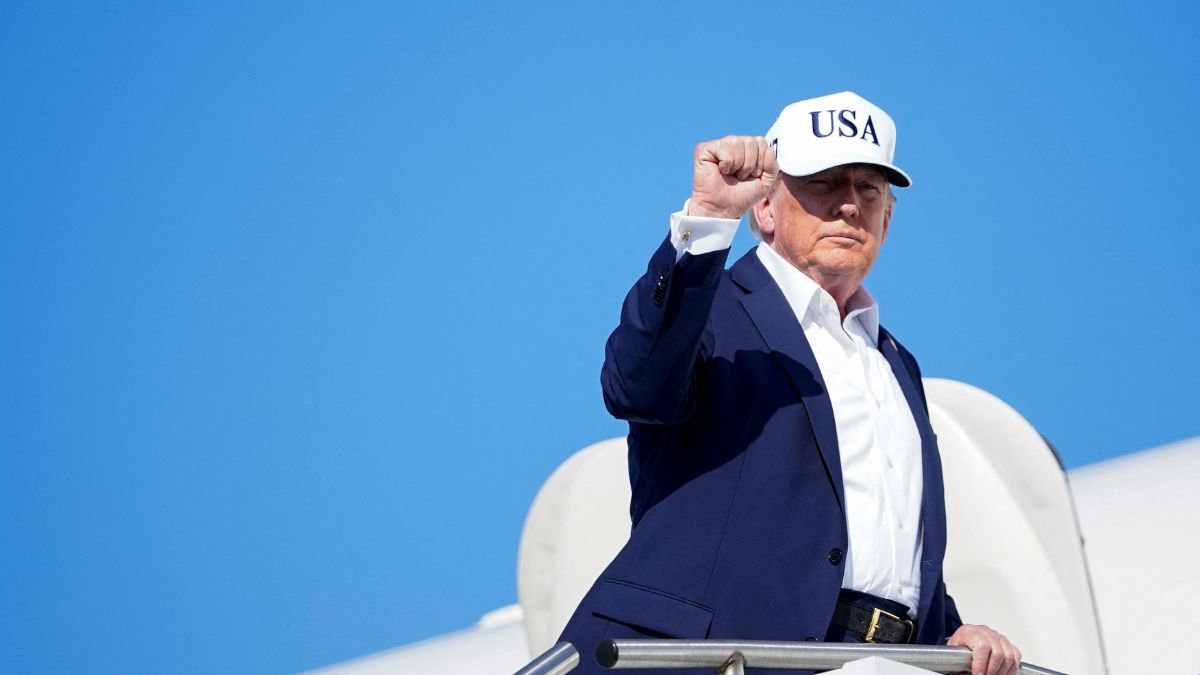US President Donald Trump has announced a 25 per cent tariff on Indian imports, along with an additional penalty for India’s trade with Russia, to be effective from August 1. This decision comes amid tough trade deal negotiations and criticisms from the US regarding India’s high tariffs and non-monetary trade barriers, as well as its close ties with Russia in military and energy partnerships.
US imports from India
Pharmaceuticals: India is a significant source of affordable generic drugs and other pharmaceutical products for the US market.
Gems and jewelry: India’s diamond cutting and polishing expertise makes it a leading supplier of gems and precious stones, including diamonds, to the US.
Electrical and electronic equipment: The US imports a range of electronic goods, including smartphones and other electrical devices, from India.
Textiles and apparels: The US market for textiles and clothing, particularly cotton products, relies heavily on imports from India due to competitive pricing and quality craftsmanship.
Petroleum products: India, a major refining hub, exports diesel, gasoline, and jet fuel to various countries, including the US.
Engineering goods: Industrial machinery, auto components, and electrical equipment are some of the engineering goods imported by the US from India.
Organic chemicals: India exports a wide range of organic chemicals essential for industries like pharmaceuticals, agriculture, and manufacturing in the US.
Basmati rice: India is the world’s leading producer of basmati rice, with the US being a major buyer.
Handicrafts and home decor: Traditional Indian handicrafts, handwoven carpets, and decorative items are popular in the US market.
Leather and footwear: India is a major exporter of leather goods, including shoes, bags, and belts, to the US.
US imports from India: in figures
1. Overall trade figures
In 2024, the US imported a total of $91.2 billion worth of goods and services from India.
India’s share in total US goods imports stood at 18% in 2024.
The US goods trade deficit with India was $45.7 billion in 2024.
2. Major imports: In value
Electrical and electronic equipment: $14.40 billion
Pharmaceutical products: $12.73 billion
Pearls, precious stones, metals, coins: $11.88 billion
Machinery, nuclear reactors, boilers: $7.10 billion
Organic chemicals: $3.63 billion
Mineral fuels, oils, distillation products: $3.23 billion
Other made textile articles, sets, worn clothing: $3.10 billion
Articles of iron or steel: $2.83 billion
Vehicles other than railway, tramway: $2.80 billion
Articles of apparel, not knit or crocheted: $2.52 billion
3. Potential impact of the proposed 25% tariff
Vulnerability of key sectors: The 25 per cent tariff could significantly impact crucial Indian export sectors like pharmaceuticals, auto parts, and electronics, as they may face higher tariffs compared to other trading partners.
Reduced competitiveness: The increased cost of Indian goods due to the tariff could diminish their competitiveness in the US market, potentially leading to lower demand and market share.
Uncertainty and reduced orders: The impending tariffs have already created uncertainty for traders, causing a slowdown in new orders from US buyers, particularly for the crucial Fall-Winter season.
Sector-specific impacts: Industries heavily reliant on exports, such as IT, pharmaceuticals, and textiles, may experience more significant market corrections compared to less export-oriented sectors.
Indirect competition from China: The tariffs imposed by the US on Chinese goods could indirectly affect India. China may redirect its exports to European markets at reduced prices, increasing competition for Indian exporters in those markets.
The possibility of a trade deal between India and the US still exists, with the American delegation set for India visit on August 25 for the sixth round of negotiations for the much-awaited Bilateral Trade Agreement (BTA). Both PM Modi and Trump expressed their commitments to when they met earlier this year.
Some analyses also indicate potential opportunities for India amid the tariff restructure. For instance, India’s share in US electronics imports increased to 7.2 per cent in May (year-on-year), while China’s share declined from 22 per cent to 11 per cent. This suggests that shifts in global trade dynamics might offer opportunities for Indian products, especially in sectors less affected by the tariffs. It is important to note that the possibility of a trade deal between India and the US still exists, which could potentially alter or reverse the tariff implications.


)

)
)
)
)
)
)
)
)



